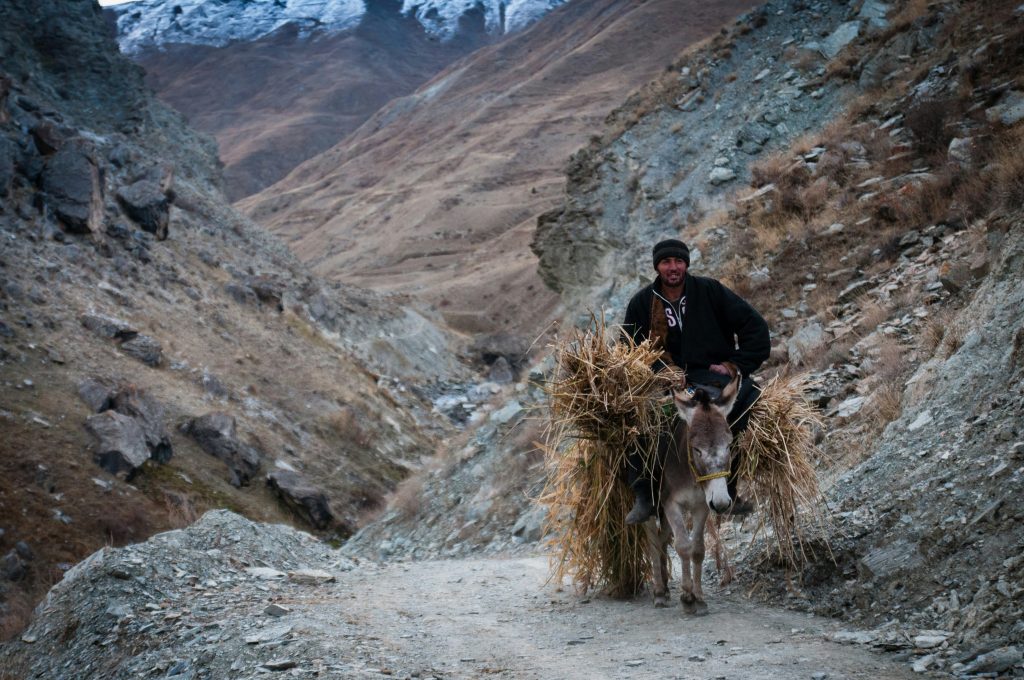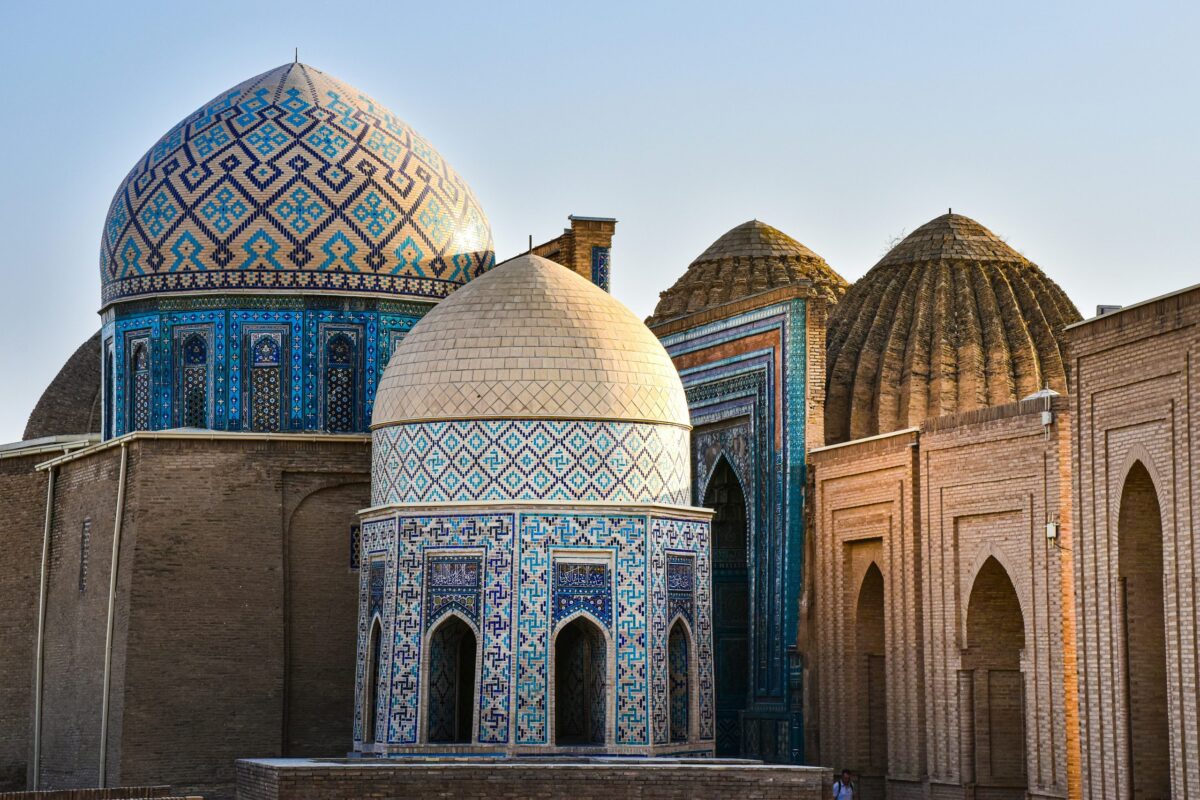Central Asia is blessed with abundant natural resources. From Kazakhstan’s oil reserves to Turkmenistan’s gas fields and Uzbekistan’s gold mines, fossil fuels and minerals have long stood at the heart of the region’s economic identity.
While these sectors have delivered robust growth in certain periods, they have left Central Asian nations acutely vulnerable to shifts in global commodity prices and external political pressures.
Policymakers, investors, and entrepreneurs have begun to look beyond extractives to new growth frontiers such as agriculture, tourism, IT services, and manufacturing.
Though paths will differ by country, the challenge of diversification is shared across the region, and the potential rewards—value-added exports, job creation, and more stable incomes—could reshape Central Asia’s economic future.
The Soviet legacy
The roots of Central Asia’s extractive-heavy economic structures can be traced to the Soviet era, when Moscow’s planners channelled the region’s resources into the broader Soviet industrial machine.
Abundant raw materials were shipped north and west, while finished goods were imported from Russia and other Soviet states. When the USSR collapsed in 1991, the newly independent republics inherited large-scale mines, oilfields, and gas pipelines, but had little of the manufacturing capacity or service industries that might have provided a sturdier foundation for a diversified economy.
Kazakhstan, by far the largest economy in the region with a GDP of around 226 billion US dollars, exemplifies this legacy.
Oil and related products comprise roughly 60 per cent of Kazakhstan’s total exports. Turkmenistan, which recorded an estimated 6.3 per cent GDP growth in 2024, relies heavily on natural gas sales, predominantly to China.
Uzbekistan meanwhile has historically relied on mineral wealth—gold and copper—and cotton as its main commodity, making it one of the world’s biggest cotton exporters.
Tajikistan depends heavily on aluminium, while Kyrgyzstan looks to gold. These extractive sectors ensure consistent budgetary support and jobs, but they also expose national economies to boom-and-bust cycles dictated by commodity prices.
Although oil, gas, and minerals continue to deliver hefty revenues, these riches have not always translated into more inclusive development. Infrastructure remains patchy and corruption concerns persist, hampering efforts to lay the groundwork for sustainable growth.
The Soviet legacy still lingers in the form of outdated regulations, bureaucratic inertia, and undervalued human capital, collectively discouraging diversification.
New growth frontiers: Agriculture, IT and tourism
In response, Central Asian states are taking a closer look at a handful of sectors deemed most likely to foster durable, broad-based growth. Agriculture, IT services, tourism, and manufacturing feature prominently in official strategies and investment pitches, backed by foreign donors, bilateral agreements, and rising intra-regional connectivity.
Agriculture has traditionally provided livelihoods for a large segment of the population across Central Asia—nowhere more so than in Uzbekistan, where around 25 per cent of total employment is still in farming, according to the World Bank.
Yet the production focus has been on bulk commodities such as cotton or wheat. Opportunities abound for pivoting to higher-value products, including processed foods and horticulture.
Greenhouse projects near Tashkent are likewise thriving, supplying fresh produce to nearby markets. The Asian Development Bank (ADB) and other international donors have channelled funds and know-how into agribusiness schemes, seeing in Central Asia a future powerhouse for food exports.
Central Asia’s budding IT sector is small but brimming with potential. Kazakhstan has led the way with the Astana Hub, a government-sponsored tech park that features tax incentives and minimal administrative barriers for start-ups.
Uzbekistan, too, has recently passed legislation to encourage technology entrepreneurship, establishing IT parks in major cities. Although obstacles remain—patchy internet connectivity, a limited talent pool, and language barriers—state-led digital transformation programmes aim to spur growth and create an ecosystem that could radiate benefits well beyond the tech sector itself.
According to the World Bank’s Digital Development Partnership, robust connectivity can be a catalyst for productivity gains across the board.
Central Asia’s tourism potential, underdeveloped for decades, is gradually being unlocked. Uzbekistan’s UNESCO World Heritage sites—Samarkand, Bukhara, and Khiva—already feature on many travellers’ bucket lists, while Kyrgyzstan’s Tien Shan mountains and Tajikistan’s Pamir region attract a trickle of adventure-seekers each year.
Kazakhstan presents a modern city-break alternative, boasting Almaty and Astana, which come with upscale hotels and conference facilities. Infrastructure gaps are slowly being addressed via new roads, rail upgrades, and airport renovations funded in large part by Chinese or multilateral loans.
Governments have taken steps such as relaxing visa requirements to woo foreign visitors. Uzbekistan, for instance, introduced a visa-free regime for many countries in 2019, aiming for nine million foreign tourists by 2026 (a target from the State Committee for Tourism Development). Whether this ambition can be met remains to be seen, but the direction of travel is (quite literally) clear.

Manufacturing
Moving into manufacturing after decades of reliance on raw materials is no easy feat, yet scattered successes can be seen.
Uzbekistan’s automotive sector began with assembly plants in partnership with South Korean firms and has since diversified. Kazakhstan has likewise ventured into machinery production, with foreign direct investment in renewables and agricultural machinery manufacturing.
The overarching goal is to climb the value chain—beyond simple assembly and into research, development, and local supply-chain creation.
Being landlocked drives up transport costs, but ongoing improvements in cross-border trade corridors via China’s Belt and Road Initiative and other regional ventures are starting to smooth the passage of goods towards Russia, Europe, the Middle East, and South Asia.
Perhaps the biggest shift under way is the drive towards higher-margin exports. Converting cotton to textiles or ready-made garments, wheat to flour, crude oil to refined petrochemicals, and raw metals to finished products all represent the necessary leaps if Central Asia hopes to secure sustainable gains.
Uzbekistan’s expanding textile industry is a pertinent case in point: once best known for exporting raw cotton, it now seeks to become a significant supplier of finished garments, boosted by foreign investors who spot the potential of a large, relatively low-cost labour force.
Value-added agriculture, too, is on the rise. Dried fruits, nuts, fruit juices, and other processed items from the Fergana Valley are finding their way to foreign supermarkets, including in Russia, Turkey, and parts of Europe.
Processing and branding allow local producers to retain a bigger share of the profits. This development has drawn praise from the European Bank for Reconstruction and Development (EBRD), which sees value-added exports as a crucial step towards sustainable growth and poverty reduction.
Nevertheless, political tensions within the region often hamper cross-border collaboration, though recent years have shown glimmers of reconciliation, especially between Uzbekistan and its neighbours.
Programmes such as the Central Asia Regional Economic Cooperation (CAREC) seek to remove bottlenecks by standardising customs rules and infrastructure protocols, in the hope of creating a cohesive regional marketplace.
Policy reforms for broader success
No matter how extensive the plans for sectoral expansion, a stable and business-friendly policy environment is pivotal for economic diversification.
Transparency, the rule of law, and a level playing field are essential if Central Asia is to lure and retain both domestic and foreign capital. Since 2017, Uzbekistan’s government has introduced a series of liberalising reforms, including currency convertibility and the easing of trade restrictions.
Kazakhstan’s President Kassym-Jomart Tokayev has repeatedly pledged to clamp down on corruption and improve investment conditions, particularly as his country vies to remain the primary destination for foreign direct investment in the region.
Special economic zones (SEZs) have sprouted across Central Asia, promising tax breaks, simplified regulations, and modern infrastructure. Kazakhstan’s Khorgos Eastern Gate on the border with China serves as a prominent example of how SEZs can spur localised manufacturing, logistics, and commerce.
Uzbekistan is also creating SEZs around Navoi and Jizzakh. By granting fiscal privileges in these enclaves, policymakers aim to attract firms that bring fresh technology, management skills, and global connections.
Spreading the word
Central Asian governments are taking their diversification story on the road, holding investor summits and signing bilateral deals. While Kazakhstan still draws the lion’s share of foreign money—mostly into oil, gas, and mining—non-extractive FDI is slowly expanding.
The EBRD and the Asian Development Bank have jointly funded major ventures in renewable energy, transport, and agriprocessing. Private sector interest from Turkey, South Korea, the Gulf States, and China is also on the rise. Ultimately, the stability of such investments depends on political consistency and prudent debt management.
A diversified economy cannot flourish however without a skilled and versatile workforce. Although education levels are comparatively high in Central Asia, vocational and technical training often lags behind market needs. Kazakhstan’s Bolashak programme, sending students to study abroad and then return, has contributed to a growing pool of internationally trained professionals, while Uzbekistan has fostered ties with foreign universities—ranging from South Korea to Germany—to build expertise in engineering and IT.
Governance and transparency
Stepping away from extractives will also require robust governance frameworks. Corruption, bureaucratic inertia, and the clout of state-owned enterprises have long deterred foreign investors.
Initiatives such as the Extractive Industries Transparency Initiative (EITI) have helped uncover the flow of revenues from natural resources in Kazakhstan and Kyrgyzstan, but progress across the region is uneven.
More transparent procurement and regulatory processes must follow if Central Asia hopes to break from the cyclical pattern of commodity-driven wealth.
Above all, sustained political will is needed to break free from the legacy of resource dependence. Embracing competition and diversifying into new industries will not come without risks—subsidies may be cut, incumbents disrupted, and job transitions can create short-term social tensions.
Yet, handled wisely, these disruptions can spark innovation and boost productivity. Better-paid, future-focused jobs could lift living standards across the region.
The young and growing population of Central Asia is increasingly plugged into the global economy. Should policymakers succeed in unleashing their entrepreneurial energy and attracting the capital to transform sectors beyond oil and minerals, the region could carve out a larger role in global value chains.
The prize—economic stability, higher incomes, and a more dynamic society—is well worth the effort. If Central Asian nations seize this pivotal moment, they stand to rewrite a decades-long narrative and finally harness the potential that lies in the crossroads of Eurasia.
Top photo by AXP Photography on Unsplash. Below, Yaghnob Valley, Tajikistan by Joel Heard on Unsplash.







